Pte George Broadhurst Merrick (1924–44)
Introduction
My awareness of Private George Merrick goes back to the 1980s, although not by name. From 1984 to 1986, we conducted three long interviews with Maj Bob Paterson (at his home in Brantford, its living room overlooking one of the holes on the neighbouring golf course). One of the many things that stuck in my memory concerned Merrick’s job – sniper; his inexperience – reinforcement; and the terrible consequences – death.
Maj Paterson used the incident to illustrate the reinforcement problem within the Argylls from the end of August through to the end of October. There was no chance to integrate them fully into the unit and to upgrade their training.
Over the course of poppy research, I tried to put together that persistent memory with a name. Today’s poppy text features Pte George Broadhurst Merrick.
In the 1980s, I stood with Pte John “Mac” MacKenzie, D Coy, watching the serving battalion return from a weekend exercise. Mac asked one of the troops how it went. The soldier replied that it was cold, wet, and everything seemed to go wrong. Mac shrugged and smiled, “A good day then,” he said. “It’s a bad day when the German army is trying to kill you.”
Fighting against a determined enemy tested the resolve of infantry battalions. The 28th and 29th of October offered the Argylls yet another test. The companies were under-strength, LCol Stewart had left for an operation, Maj Stockloser, the hated 2ic, was in command, and everyone was tired. In two days of fighting, the Argylls suffered 12 KIAs and 45 wounded.
Bergen op Zoom
Day 1
War Diary. 28 October 1944. Bergen op Zoom [C.T.B.]
At 0900 hours the C.O. [Major Stockloser] was called to an “O”-Group at Brigade, where he received the following instructions: On the previous day the Lincoln and Welland Regiment and the South Alberta Regiment had entered Bergen-Op-Zoom [sic] and had found the city free of enemy. However, when the infantry tried to cross the deep irrigation ditch that stretched across the northern outskirts … they encountered stiff opposition and were forced to withdraw.
To the Argylls was given the task of establishing a bridgehead across the ditch. According to … Brigade, the ditch could easily be crossed on foot: The sides of the obstacle were terraced slopes, and the water at the bottom constituted no great obstacle, since it was shallow and only a few feet wide. No vehicles could as yet get across: The causeway leading over … had been cratered and a concrete block placed in the centre. The Brigadier [Jefferson] pointed out that at the left extremity … there was a narrow neck of land that offered some chance for an outflanking movement.
“C” Company would move into position along the side of the bank … the causeway and … give covering fire”
The Battalion moved up to Bergen op Zoom later in the morning and at 1200 hours the C.O. held his own “O”-Group, at which he gave the following plan: After a very heavy Artillery concentration, “C” Company would move into position along the side of the bank, a short distance to the left of the causeway and would then give covering fire for the Battalion crossing. “D” … would then pass through “C” and occupy the houses immediately on the other side … thus making a firm bridgehead beyond which the other two companies would exploit to specific objectives.
“Heavy mortars were also raking the “C” and “D” … areas”
At 1400 hours the Battalion moved off through the city just as the artillery preparation was ending; some of the medium shells were landing short and causing casualties among our own troops. By 1445 … “C” … was in position along the edge of the ditch, “D” … however, found it impossible to go beyond the “C” … position because of extremely heavy S.A. fire. In the meantime “A” and “B” … had temporarily taken up positions on the outskirts of town, waiting for the situation ahead to clear up. No change took place in the company dispositions during the afternoon. The enemy was well dug in on the other side and was thoroughly aware of our intention so that a frontal assault across the ditch during daylight was out of the question. Heavy mortars were also raking the “C” and “D” … areas, and an 88 mm. had our positions accurately spotted.
The situation called for a new plan. Accordingly, the C.O. [Stockloser] called an “O”-Group at 1930 hours and gave the following orders: “C” and “D” … were to remain in position…. “A” … was then to move westward, cross to the other side … along the narrow strip of ground previously referred to, and then work its way to the enemy side of the causeway. If this company was successful, “B” was to follow immediately behind. In the meantime, “D” … would recce the causeway for an alternative crossing.
East of the causeway, one company of the Lincoln and Welland … with the assistance of their wasps, would create a diversion. The carrier platoon was despatched to recce the area for the proposed “A” Company crossing. At 2030 hours Captain MacClean [Hugh Maclean] reported that there were no enemy there; he was ordered to remain as a firm base in this position. “H”-hour for the new attack was set at 2130 hours. Again the attack failed. In the first place, the Lincoln … diversion never materialized; our own Artillery, for the second time that day, fell short on the Lincoln … positions so that their plans were completely disorganized. Then, the leading “A” … platoon, under Lt. N.A. Donaldson, as it was attempting to outflank the ditch, was pinned down by an M.G. that had the narrow gap covered and, in addition, suffered casualties from anti-personnel mines.
“Mitchell got wounded … put his head up and some sniper shot him”
[KIA/DW: Pte Thomas Dwyer (29 October) and Pte George B. Merrick. Wounded: 16.]
Interview. Pte James Patrick Murray. 13 Platoon, C Coy
We went over … and took a … big farmhouse…. I pulled into this farmhouse … and these Germans were around in there, and I was yelling hands up … and all this stuff. I got 11 prisoners, and I really didn’t realize it, but I only had one shell in my gun, and it was only a rifle…. So that scared the hell outta me…. I had a couple of friends wounded there … [including L/Cpl Allan] Rabinovitch … [CSM George] Mitchell got wounded … I was there … put his head up and some sniper shot him.
“a helluva good sniper … He’d picked off my sniper … drilled him right through the head”
Interview. A/Major Bob Paterson. OC, C Coy
I helped him [CSM Mitchell] out of the line when he was wounded at Bergen op Zoom, and that was a sad day in my life to see him go … for some reason he was cutting wire or something in front of our trench … why the hell he was doing that, I don’t know. But they picked him off … there was a helluva good sniper across the way. He’d picked off my sniper … drilled him right through the head.
War diary. 29 October 1944. Bergen-op-Zoom [C.T.B.]
“C” Company from the opposite side gave good covering fire. The work of L/Cpl. Fraser, a company signaller, was especially praiseworthy. On the preceding day the two company snipers had been put out of action: Pte. Merrick had been killed and Pte. Snow, wounded. L/Cpl. Fraser volunteered to take over their work, and during the morning accounted for two enemy snipers who were holding up “B” Company’s advance.
Robert L. Fraser
Regimental Historian
Death in battle is different, Sam Chapman thought:
“He is cut down in an instant with all his future a page now to remain forever blank.
There is an end but no conclusion.”
– Capt Sam Chapman, C and D Coys
Pte George Broadhurst Merrick (1924–44)
KIA 28 October 1944
“… would prefer combatant duties”
George Broadhurst Merrick was born in Halifax on 25 January 1924 to Howard Pollard Merrick and Lillian Bell Merrick; they had married in Saint John, N.B., in 1917 (she died in January 1929). He had one older brother, Arthur Howard Merrick. After completing grade 9 “in urban NS,” George spent one year in grade 10 “but did not pass.” He “attended regularly” and “left at 17 because he wanted to go to work.” He joined William Collins & Sons for two years as a machinist’s apprentice in “dieseling” and enlisted in Halifax on 15 June 1943; his older brother was already in the service. George was 5’ 10”, 201½ lb, with a “ruddy” complexion, blue eyes, and brown hair; the medical officer noted that he had had an injury to the third finger on his left hand.
At Merrick’s interview on 18 June 1943, the army examiner described him as: “Shy, softly voiced, but says he would prefer combatant duties to employment at a bench. Possesses superior learning ability. Will likely become an asset to his unit.”
The officer further noted that Merrick was single, had a brother in the RCNVR, “has no idea why his category is ‘B-1’, and “does not look as heavy as his weight indicates.” He played “pick-up” hockey and baseball “and attends sporting events.” He was recommended for “R.C.A. A/A Mobile” (Royal Canadian Artillery, anti-aircraft). Merrick’s post-secondary training suggested the likelihood of a trade designation.
On 26 August 1943, at the end of six weeks of basic training, Merrick was “reinterviewed” and the report stated:
“Is getting along well. Was B1., because of overweight. Is down to 190 lbs. Now. If category is raised to A would like to be reallocated to C.A.C” [Canadian Armoured Corps].
It was not to be. Instead, the army reallocated him to RCA, A/A Mobile on 6 September 1943. At Elkins Barracks, N.S., on 4 December 1943, he was deemed “Suitable for O/S service with R.C.A. (LAA) Gunner.” His status changed again at Debert, N.S., on 24 January 1944: “This man is found suitable for C.I.C. –Rifleman N/T [no trade].” Seven days later, there was another development: “Re-allocated to C.A.C. for training as Gunner Operator.” Merrick’s record is spotless save for being AWOL for 12 hours and 5 minutes (the army did not round down!) on 28 December 1943; he was confined to barracks for 7 days and forfeited 2 days’ pay.
On 21 April 1944, at a CAC training facility in Brampton, Ont., Merrick took a “Basic Training refresher course” and impressed the examiner, as he regularly did: Tpr. Merrick has good appearance and bearing. He is mature, reliable, and has a good attitude towards training. Superior learning ability has been reflected in results at this centre. Merrick is interested, sticks with his training, and has good N.C.O. possibilities.
The officer added his “rifle score,” which was “38/60.” Once again, Merrick found himself reallocated, this time to the infantry. He was sent to Alberta for further training in May and June 1944. Throughout late 1943 and 1944, the exigencies of the battlefield and the staggering losses of infantry battalions necessitated more men be directed to the infantry. Merrick was one of them; it proved fateful.
“Expert Shot”
Pte Merrick went overseas on 4 August, disembarked in the UK on the 10th, and reported for duty the following day. He went to 4 CIRU, where it was noted on his file “Expert Shot.” He joined the Argylls (and C Coy) on 15 September 1944 at Moerkerke, Belgium. Earlier in 1944, Merrick received the classification “EXPERT” on the “.303 Rifle.” Small arms training was one of the core elements of an infantry battalion. After LCol Stewart took over the battalion in September 1943, training at all levels intensified and range work was one obvious area.
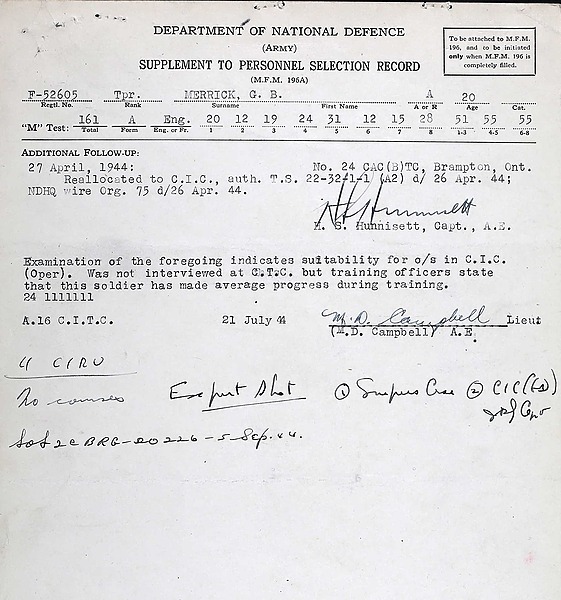 Supplement to Personnel Selection Record, Tpr G. B. Merrick, 21 July 1944.
Supplement to Personnel Selection Record, Tpr G. B. Merrick, 21 July 1944.
On 24 January 1944, the war diarist wrote: “Whether it be an indication of things to come or not the fact remains that the rifle ranges are doing a thriving business. All companies are spending a goodly portion of their time riddling targets with speed and accuracy.” Two days later, he observed that: “For convincing proof that all the range work has not been in vain consider the Argyle [sic] Rifle Team.” They had fired against 30 competitors in 4 Division and won betting their closest rivals, the South Alberta Regiment, by three points. On 2 May 1944 at Buxted Park “a Sniper School is held … to last, 2, 3, 4 May. 2 snipers from each rifle coy will attend.”
“a sniper only had so many hours to live”
As the Argylls would discover from early August through to late October, the Germans made effective use of snipers. Many Argylls were hesitant about sniping. Pte Bruce Johnson, one of B Coy’s snipers, stated:
Had some reservations about it at the start. I knew that a sniper only had so many hours to live, and I was told that the calculations were about forty-eight hours [of battle]. It was strictly a volunteer job. I figured that I might have a better chance, that I could fight the war more or less on my own through assignments given to me personally. I’d say [I was] a loner by nature.
Pte Merrick was an Argyll for six weeks; his designation as an expert shot made him an obvious candidate to be one of C Coy’s snipers, and so it was to be.
Two days after his arrival (15 September), C Coy “left at 0745 … to work with 3 [i.e. C] Sqn. S.A.R.’s on a Hun-sweep.” By the 18th, they liberated Zelzate and then Sas van Gent on the 19th. As Capt Sam Chapman, 2ic of C Coy wrote to his wife: “There is a thrill in entering a town as first troops that a fellow could never forget.” After that, things were as one C Coy officer put it, “relatively quiet,” although the weather was “wet and cold.” By mid-October, the weather had not changed but it was no longer relatively quiet. C Coy was in the midst of it. Maj Bob Paterson led his under strength company in the night actions on the approaches to Essen with almost “constant fighting,” “adverse weather conditions,” in a “quagmire … completely dominated by enemy fire.” The fighting, again at night, on the 24th was “peculiarly nasty. In a few short weeks, George Merrick witnessed scenes unimaginable to a shy, bright youth who had grown up in Halifax.
“C” Company would move into position along the side of the bank …the causeway and … give covering fire”
The last week of George Merrick’s life was spent with his fellow comrades-in-arms, in “nightmarish” fighting in the worst of weather. C Coy attacked again on the 27th and consolidated its position at Bergen op Zoom. At 1445 on the 28th, C “was in position” “a short distance to the left of the causeway,” “where it would give covering fire” for the attacking companies. Heavy German mortars raked it; there was also sniper fire.
“a very nice man … educated … my idol … anxious to conserve his own men”
Maj Paterson was, as reinforcement Pte Sam Resnick – who came to C Coy on 12 September – expressed it: “a very nice man. He was educated and a reader … he was … my idol … a gentleman who was anxious to conserve his own men. He was very gentle with his men.” “Flan” Paterson had a poor view of reinforcements and their training prior to their introduction to battle. Yet, there was an acute need for them given the unit’s staggering number of casualties from 26 July until the end of October: 142 KIA, 445 wounded and 32 POWs.
“Jesus, he lasted about five minutes”
Paterson was well aware of the inherent dangers for a sniper, especially a reinforcement, and took particular care in setting up Pte Merrick that fateful day. It proved all for nought. Paterson recalled that the German sniper who shot [C Coy CSM George] Mitchell was:
… a helluva good sniper across the way. He’d picked off my sniper. I’d set this guy [Merrick] up in one elbow of the trench which I thought was great. It ran a good view across the canal. I’d set up him all up by myself with this – he was a reinforcement with his goddamn sniper’s rifle and everything all calibrated. Jesus, he lasted about five minutes. They drilled him right through the head. Of course he was sitting up. He didn’t [last], he was a reinforcement.
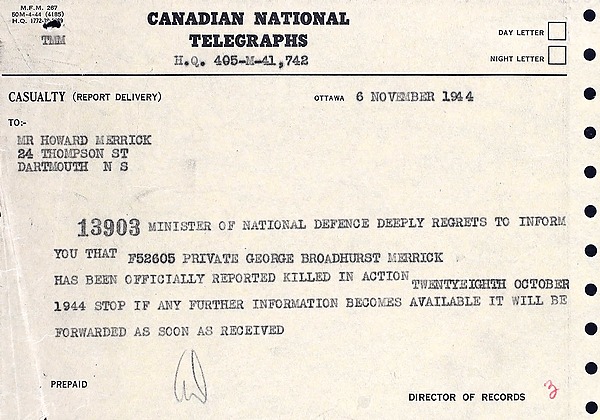 Telegram to Pte Merrick’s father, 6 November 1944.
Telegram to Pte Merrick’s father, 6 November 1944.
Capt Sam Chapman’s reflections on Argyll deaths in battle proved all too true for young George Merrick and his violent death: “He is cut down in an instant with all his future a page now to remain forever blank. There is an end but no conclusion.”
The Adjutant General wrote to Howard Merrick on 22 November 1945 expressing, on behalf of the minister of National Defence and the members of the Army Council “their sincere sympathy in your bereavement.” “We pay tribute,” he concluded, to the sacrifice so bravely made.” Pte Merrick left his father, who would die in 1965 (his mother had died in 1929), and his brother Arthur Howard Merrick (1921-94). His belongings amounted to little: some photos and postcards, a cigarette case, 2 rings, a pin souvenir, a medallion, and some souvenir coins. Families could choose an epitaph for the permanent grave marker. The Merrick family’s choice was:
GREATER LOVE
HATH NO MAN THAN THIS,
THAT A MAN LAY DOWN
HIS LIFE FOR HIS FRIENDS.
Between 24 April and 6 May 1945, 16 Argylls were killed in action and 57 wounded.
“a history bought by blood” – Capt Sam Chapman, C and D Coys
Remembered respectfully by an Argyll
Note: Pte Merrick’s poppy will be placed in the virtual Argyll Field of Remembrance in the near future. The Argyll Regimental Foundation (ARF) commissioned Lorraine M. DeGroote to paint the Argyll Poppy (below) for the Field of Remembrance.
Robert L. Fraser
Regimental Historian

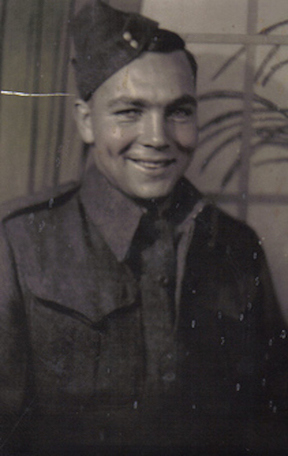 Pte George Broadhurst Merrick
Pte George Broadhurst Merrick
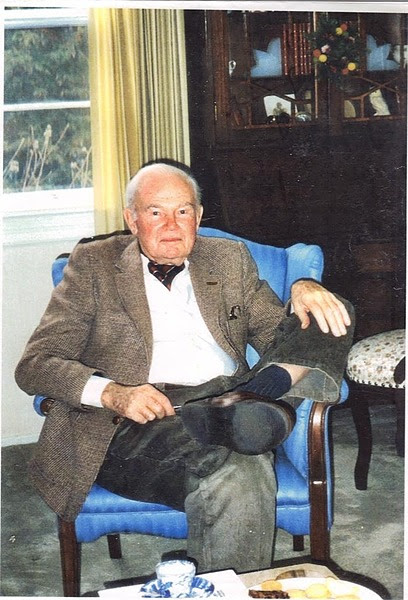 Maj R. A. Paterson
Maj R. A. Paterson
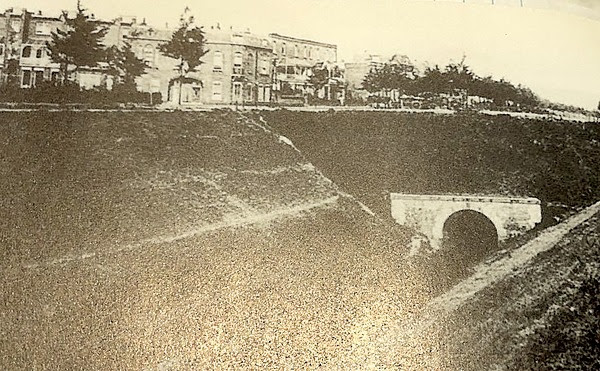 A view of the Zoom during the war. It was expected that the Argylls would walk across it easily.
A view of the Zoom during the war. It was expected that the Argylls would walk across it easily.
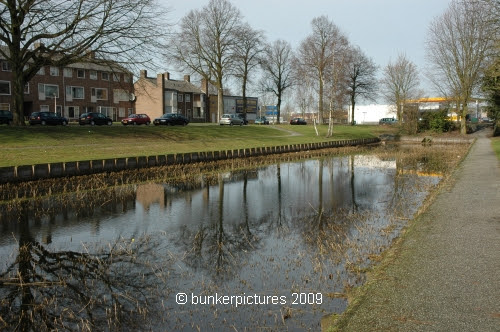 Site of the anti-tank ditch, 2009.
Site of the anti-tank ditch, 2009.
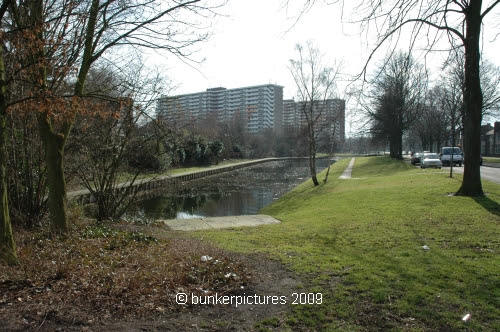 Another view of the site of the anti-tank ditch.
Another view of the site of the anti-tank ditch.
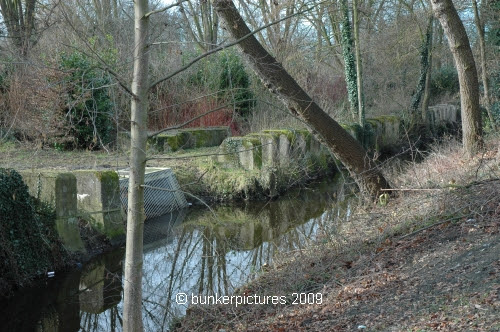 Dragon teeth section of ditch.
Dragon teeth section of ditch.
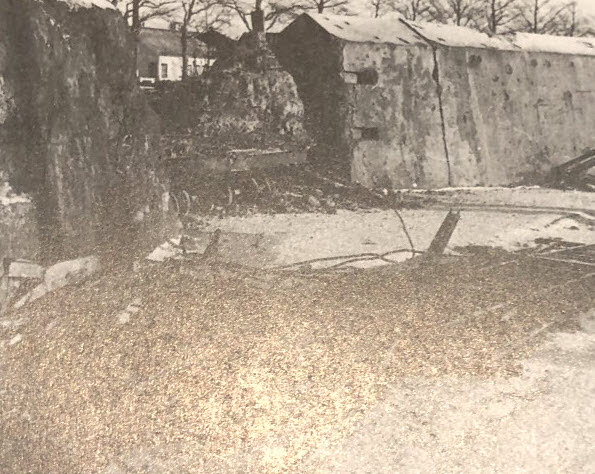 The one bridge left intact over the Zoom, blocked by this concrete barrier.
The one bridge left intact over the Zoom, blocked by this concrete barrier.
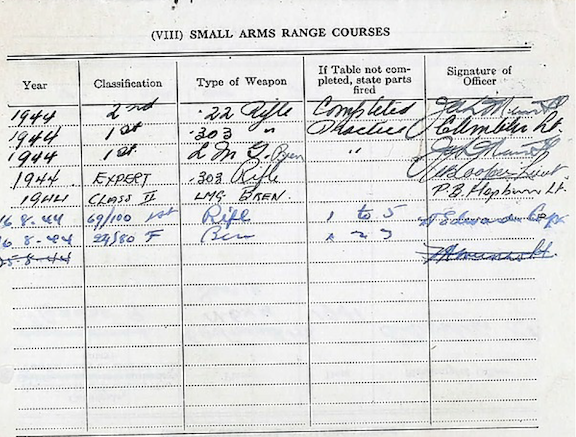 Pte George Broadhurst Merrick, record of small arms range courses
Pte George Broadhurst Merrick, record of small arms range courses
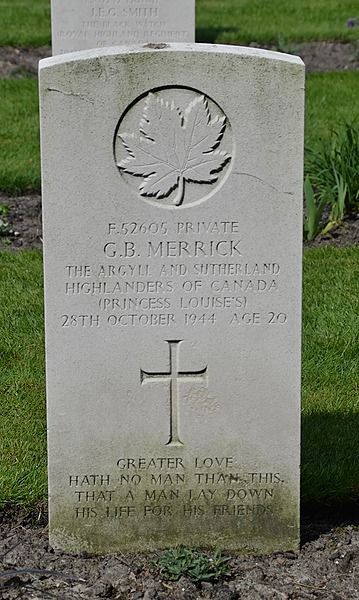 Grave marker for Pte George Broadhurst Merrick in Bergen op Zoom Canadian Cemetery, Netherlands.
Grave marker for Pte George Broadhurst Merrick in Bergen op Zoom Canadian Cemetery, Netherlands.